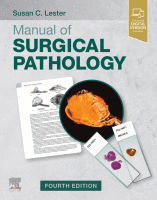Physical Address
304 North Cardinal St.
Dorchester Center, MA 02124

You’re Reading a Preview Become a Clinical Tree membership for Full access and enjoy Unlimited articles Become membership If you are a member. Log in here

The most common reasons for amputations are peripheral vascular disease (with or without diabetes mellitus—account for over half of amputations), trauma, and occasionally tumors. After pathologic evaluation, an amputation specimen may be requested by the patient for burial. It is…

Adrenal glands may be resected en bloc as part of a radical nephrectomy, to remove a clinically evident tumor (usually a functional cortical adenoma or a pheochromocytoma), or to investigate an incidental mass seen on CT scan (usually adenomas, rarely…

Microscopes have always been the essential tool for pathologists and will likely remain so. Although this relationship is now being questioned due to increasing reliance on digital imaging, it is important to remember that a tissue section is a three-dimensional…

A pathology department potentially can be a dangerous place to work. Hazards related to the profession include physical injury (scalpel cuts, needle sticks), infectious disease, radioactivity, and noxious chemical fumes. However, the most common health-damaging risks are associated with long…

The pathologist’s H&E (hematoxylin and eosin) is like the clinician’s H&P (history and physical)—basic examinations performed on every specimen or patient forming the cornerstone of diagnosis. A wide variety of additional special studies are available to evaluate pathologic processes, from…

The surgical pathology report is a complex document with medical, legal, and regulatory significance for patients, patient populations, research, and institutions. Pathology reports have five major uses: Diagnostic and prognostic information for individual patients. Information to guide treatment of individual…

The histotechnologist and the histology laboratory are essential for the accurate diagnosis of pathologic specimens. However, the process by which tissue in cassettes is converted into glass slides remains an enigma for many pathologists ( Fig. 3.1 ). A basic…

Surgical pathologists should deal with each specimen as if they were the clinician – or, better yet, the patient – awaiting the surgical pathology report. Questions such as whether to photograph a gross specimen, how many sections to submit of…

As our knowledge deepens about the molecular underpinnings of disease, the need for precise and optimal pathologic evaluation increases. The pathologist has an essential role in patient care as guardian of the integrity and quality of specimens, diagnostician, patient advocate,…